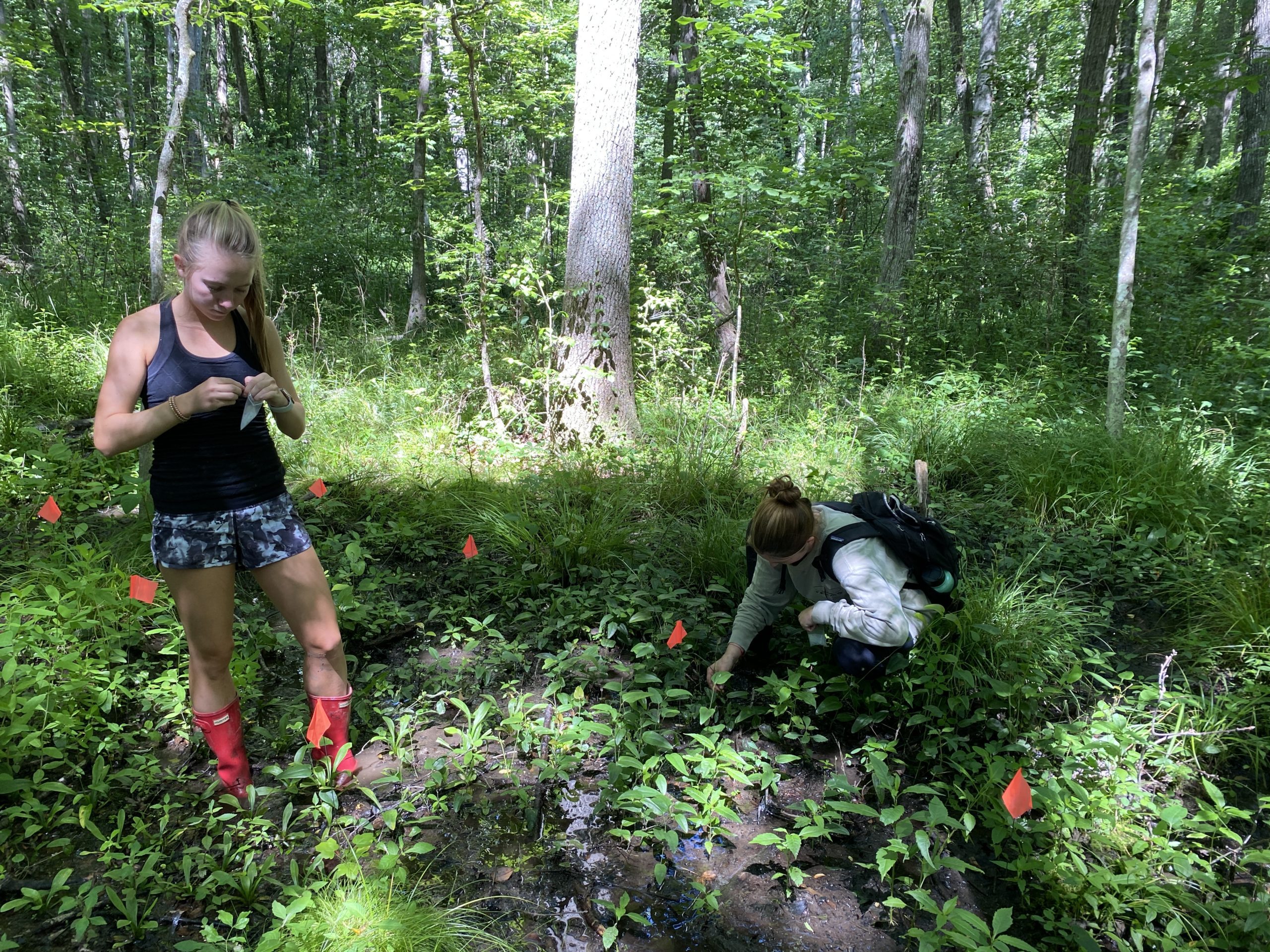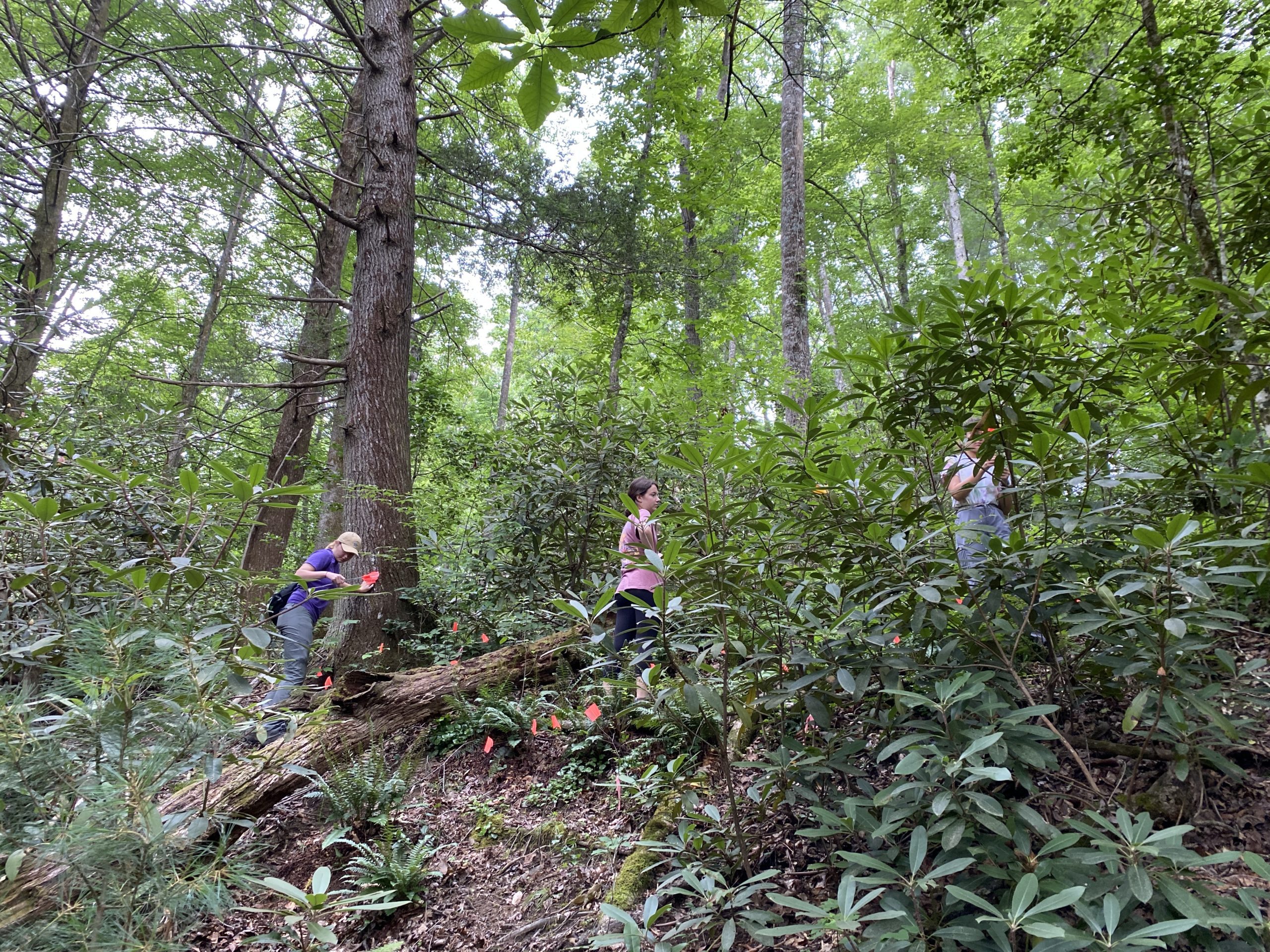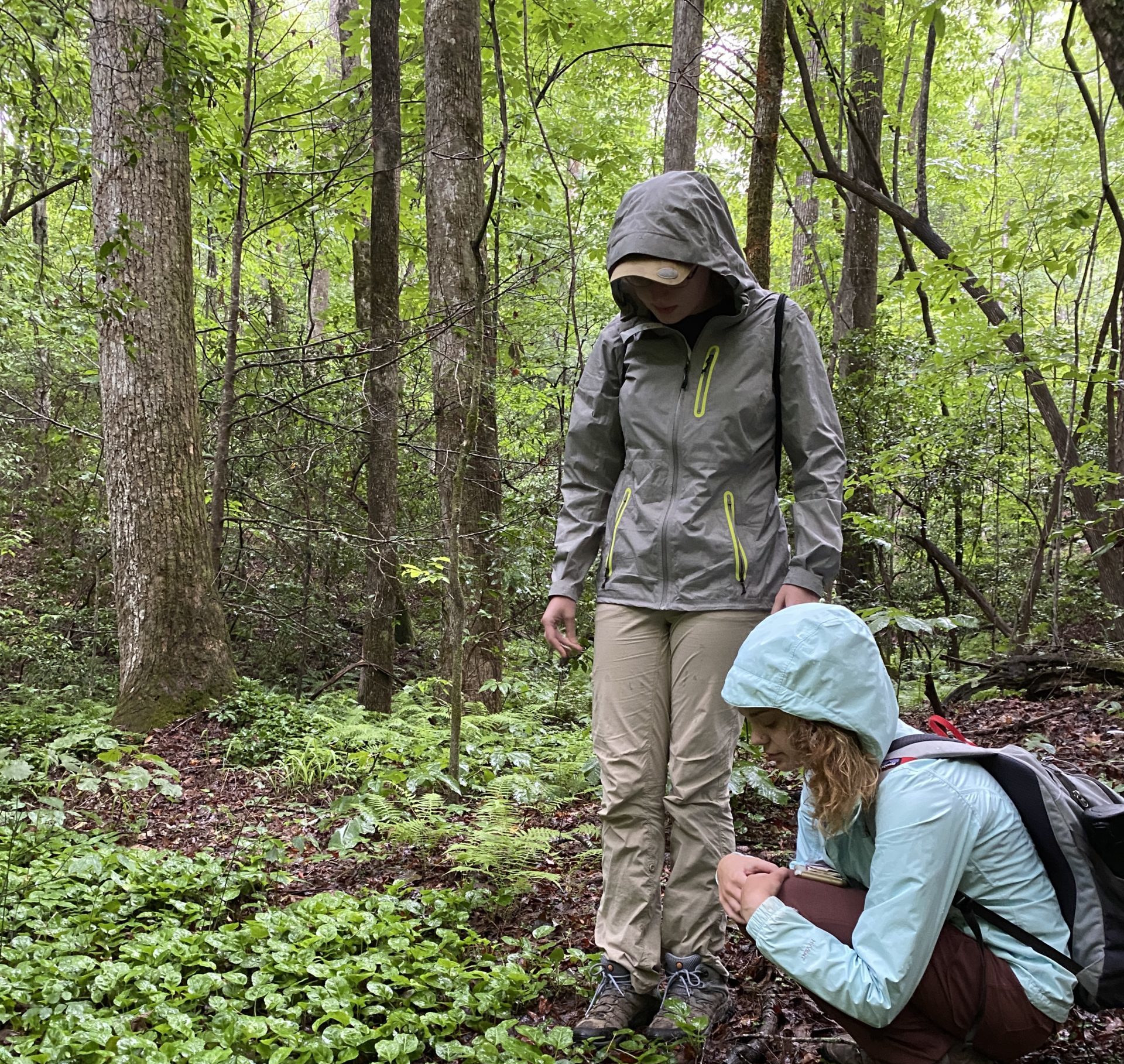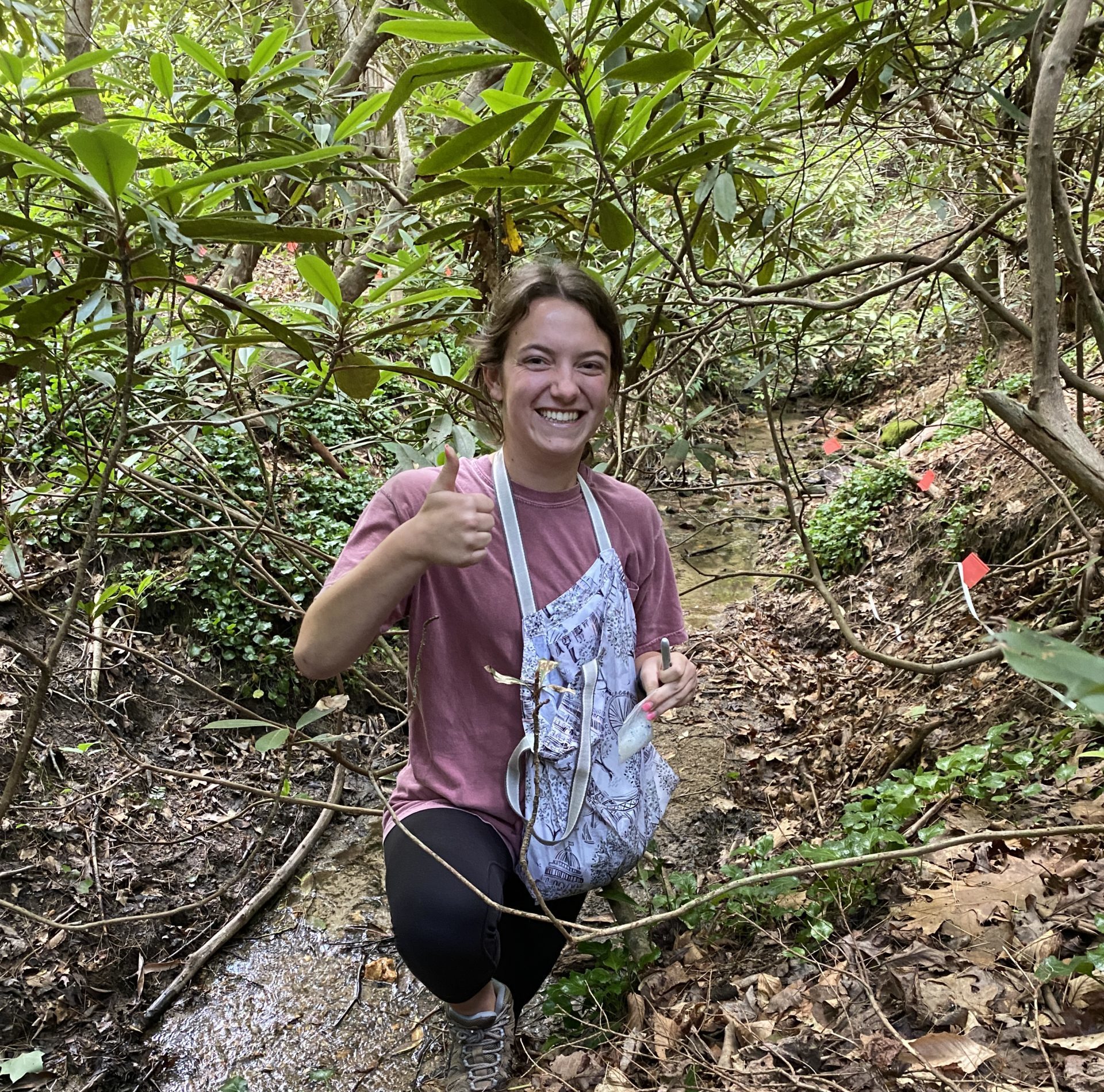By Amanda Cordle, August 2021
Plant species, which play critical roles in ecosystems and food webs, often come second to animals in discussions about species endangerment and conservation. This is not because plants are any less important, but rather, because of the differences in how our culture thinks about and appreciates these two types of living organisms. Furman Biology professor Dr. Ashley Morris is increasing awareness of the importance of plant conservation through her botany classes, as well as her summer research program. This summer, five biology students—Nora Tillmanns, Banks Floyd, Calla Pederson, Lauren Eberth, and Skyler Fox– are working with Dr. Morris to gain new knowledge about rare plant species, so that these plants can be better conserved.
“If you think about plants, they can’t move as easily as animals. They can’t get up and walk around…there are many more restrictions on plants in terms of their ability to respond to climate change.” Dr. Morris explains.
Dr. Morris has been studying botany since she was an undergraduate student at Sewanee (The University of the South). Her primary focus is plant reproduction, and more specifically, the environmental implications of sexual versus asexual reproduction. Most of her research is on rare plant species, and many of her studies have to do with clonal plants.
Clonal plants are those that reproduce both sexually and asexually, and although the offspring may appear to be individual plants, they can be genetic clones of each other that are connected by an underground stem-like structure. Therefore, gathering data important to conserving these clonal species, such as the number of individuals in a population or the genetic variance of a population, can be difficult.
“We use genetics to try and understand what an individual actually is in populations that have this [clonal] process,” Dr. Morris explains. “A couple of the projects that we’re working on now, include rare species that are clonal, and so we’re interested in the question, what then is an individual, and how then does that impact how we think about species management for these rare species.”
This summer, five student researchers are working with Dr. Morris to gather data on various rare plant species in the Carolinas and surrounding areas.
Rising junior Nora Tillmanns and rising senior Banks Floyd are both studying the federally endangered species Sagittaria fasciculata, otherwise known as the bunched arrowhead. The bunched arrowhead is a rare, aquatic species that is found only in Greenville County, SC and Henderson County, North Carolina.
“We are doing a genetic evaluation using a PCR test to determine if the individual plants are more or less genetically similar because the plant species is …clonal, and we don’t know what type of structure it grows in [spiral, linear, etc.],” Nora explains. “This research will help us determine more about the pattern of its growth…and will help us to find the individuals, the colonies, and the population itself of the entire plant species.”
The aquatic nature of the bunched arrowhead adds more possibilities to consider when trying to determine the number of individuals as well as the number of populations because clonality is not confined to one patch of land.
“Some of the waterways [in which the plants live] are connected,” Banks shares, “so we’ll sample a population and then walk maybe a half a mile to another population, but it can still be the same genetically.”
As Nora and Banks continue their genetic testing, Calla Pederson and Lauren Eberth are working on a similar research study with Oconee bells.
Oconee bells are little, herbaceous, clonal plants that are only found in a few counties across the Carolinas and Georgia. While originally thought to be one species, botanists have recently split Oconee bells into two species–Northern Oconee bells (Shortia brevistyla) and Southern Oconee bells (Shortia galacifolia)—due to genetic and morphological differences.
A large part of Calla and Lauren’s research is finding out more about the differences between these two species. Additionally, since the theory of Oconee bells being two species has only been theorized in one paper, Calla and Lauren are gathering their own data to see if there is enough variation between the Northern and Southern Oconee bells to warrant their new classification as two distinct species.
“Initially, we were just thinking about the nature of reproduction and clonality, and its implications for conservation,” Calla explains, “But….as we visit more sites and look into everything more, it [the research question] is also becoming are these even two different species?”
Thankfully, because of modern genetic testing, the expanding nature of their research question is not creating excessive amounts of extra work for them.
“We can look at both [questions] at the same time with the tools that we’re using,” Lauren shares. “We’re using microsatellites, which are specific regions in the DNA that we’re looking at, and they can be used to distinguish between individuals….and species.”
Calla and Lauren’s research has the potential to change the degree to which Oconee bells are protected. As of now, Oconee bells are listed on the state level as threatened. However, the list does not consider the fact that they may be split into two different species or that some individuals are genetic clones of each other instead of true individuals. If Calla and Lauren’s research concludes that the Northern and Southern Oconee bells are in fact separate species or that many of the sprouts previously thought to be individuals are just clones, the two species could be considered for the federally endangered list.
The fifth student researcher working with Dr. Morris this summer, Skyler Fox, is studying a plant that is already on this federally endangered list— the leafy prairie clover (Dalea foliosa). The goal of Skyler’s research is to distinguish between populations of this species rather than distinguishing clones from individuals, in part because the leafy prairie clover is not a clonal plant.
The Tennessee Department of Environment and Conservation (TDEC), with the help of The US Fish and Wildlife Service, is funding Skyler’s population genetics research with hopes that it will aid in the protection of this endangered species.
“We collected the plant samples last month, and now I am doing the genetic work with them. Eventually, once we find out more about how to define a population…based on genetics, it will help TDEC and better conserve the species in the future,” Skyler explains.
While the research projects in Dr. Morris’s lab all focus on different species and have different main research questions, the ultimate goal of each project is to better preserve our nation’s natural greenery.



